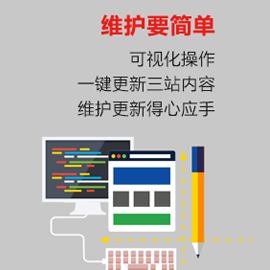Android如何實(shí)現(xiàn)系統(tǒng)打印功能-創(chuàng)新互聯(lián)
這篇文章給大家分享的是有關(guān)Android如何實(shí)現(xiàn)系統(tǒng)打印功能的內(nèi)容。小編覺得挺實(shí)用的,因此分享給大家做個(gè)參考,一起跟隨小編過來看看吧。

具體內(nèi)容如下
一、打印圖片
使用PrintHelper類,如:
private void doPhotoPrint() {
PrintHelper photoPrinter = new PrintHelper(getActivity());
photoPrinter.setScaleMode(PrintHelper.SCALE_MODE_FIT);
Bitmap bitmap = BitmapFactory.decodeResource(getResources(),
R.drawable.droids);
photoPrinter.printBitmap("droids.jpg - test print", bitmap);
}可以在應(yīng)用的菜單欄中調(diào)用該方法,當(dāng)printBitmap()方法調(diào)用時(shí),Android系統(tǒng)的打印界面
會彈出,用戶可以設(shè)置一些參數(shù),然后進(jìn)行打印或取消。
二、打印自定義文檔
1.連接到PrintManager類:
private void doPrint() {
// Get a PrintManager instance
PrintManager printManager = (PrintManager) getActivity()
.getSystemService(Context.PRINT_SERVICE);
// Set job name, which will be displayed in the print queue
String jobName = getActivity().getString(R.string.app_name) + " Document";
// Start a print job, passing in a PrintDocumentAdapter implementation
// to handle the generation of a print document
printManager.print(jobName, new MyPrintDocumentAdapter(getActivity()),
null); //
}注:print函數(shù)第二個(gè)參數(shù)為繼承了抽象類PrintDocumentAdapter 的適配器類,第三個(gè)參數(shù)為 PrintAttributes對象,
可以用來設(shè)置一些打印時(shí)的屬性。
2.創(chuàng)建打印適配器類
打印適配器與Android系統(tǒng)的打印框架進(jìn)行交互,處理打印的生命周期方法。打印過程主要有以下生命周期方法:
onStart():當(dāng)打印過程開始的時(shí)候調(diào)用;
onLayout():當(dāng)用戶更改打印設(shè)置導(dǎo)致打印結(jié)果改變時(shí)調(diào)用,如更改紙張尺寸,紙張方向等;
onWrite():當(dāng)將要打印的結(jié)果寫入到文件中時(shí)調(diào)用,該方法在每次onLayout()調(diào)用后會調(diào)用一次或多次;
onFinish():當(dāng)打印過程結(jié)束時(shí)調(diào)用。
注:關(guān)鍵方法有onLayout()和onWrite(),這些方法默認(rèn)都是在主線程中調(diào)用,因此如果打印過程比較耗時(shí),應(yīng)該在后臺線程中進(jìn)行。
3.覆蓋onLayout()方法
在onLayout()方法中,你的適配器需要告訴系統(tǒng)框架文本類型,總頁數(shù)等信息,如:
@Override
public void onLayout(PrintAttributes oldAttributes,
PrintAttributes newAttributes,
CancellationSignal cancellationSignal,
LayoutResultCallback callback,
Bundle metadata) {
// Create a new PdfDocument with the requested page attributes
mPdfDocument = new PrintedPdfDocument(getActivity(), newAttributes);
// Respond to cancellation request
if (cancellationSignal.isCancelled() ) {
callback.onLayoutCancelled();
return;
}
// Compute the expected number of printed pages
int pages = computePageCount(newAttributes);
if (pages > 0) {
// Return print information to print framework
PrintDocumentInfo info = new PrintDocumentInfo
.Builder("print_output.pdf")
.setContentType(PrintDocumentInfo.CONTENT_TYPE_DOCUMENT)
.setPageCount(pages);
.build();
// Content layout reflow is complete
callback.onLayoutFinished(info, true);
} else {
// Otherwise report an error to the print framework
callback.onLayoutFailed("Page count calculation failed.");
}
}注:onLayout()方法的執(zhí)行有完成,取消,和失敗三種結(jié)果,你必須通過調(diào)用 PrintDocumentAdapter.LayoutResultCallback類的適當(dāng)回調(diào)方法表明執(zhí)行結(jié)果, onLayoutFinished()方法的布爾型參數(shù)指示布局內(nèi)容是否已經(jīng)改變。
onLayout()方法的主要任務(wù)就是計(jì)算在新的設(shè)置下,需要打印的頁數(shù),如通過打印的方向決定頁數(shù):
private int computePageCount(PrintAttributes printAttributes) {
int itemsPerPage = 4; // default item count for portrait mode
MediaSize pageSize = printAttributes.getMediaSize();
if (!pageSize.isPortrait()) {
// Six items per page in landscape orientation
itemsPerPage = 6;
}
// Determine number of print items
int printItemCount = getPrintItemCount();
return (int) Math.ceil(printItemCount / itemsPerPage);
}4.覆蓋onWrite()方法
當(dāng)需要將打印結(jié)果輸出到文件中時(shí),系統(tǒng)會調(diào)用onWrite()方法,該方法的參數(shù)指明要打印的頁以及結(jié)果寫入的文件,你的方法實(shí)現(xiàn)需要將頁面的內(nèi)容寫入到一個(gè)多頁面的PDF文檔中,當(dāng)這個(gè)過程完成時(shí),需要調(diào)用onWriteFinished() 方法,如:
@Override
public void onWrite(final PageRange[] pageRanges,
final ParcelFileDescriptor destination,
final CancellationSignal cancellationSignal,
final WriteResultCallback callback) {
// Iterate over each page of the document,
// check if it's in the output range.
for (int i = 0; i < totalPages; i++) {
// Check to see if this page is in the output range.
if (containsPage(pageRanges, i)) {
// If so, add it to writtenPagesArray. writtenPagesArray.size()
// is used to compute the next output page index.
writtenPagesArray.append(writtenPagesArray.size(), i);
PdfDocument.Page page = mPdfDocument.startPage(i);
// check for cancellation
if (cancellationSignal.isCancelled()) {
callback.onWriteCancelled();
mPdfDocument.close();
mPdfDocument = null;
return;
}
// Draw page content for printing
drawPage(page);
// Rendering is complete, so page can be finalized.
mPdfDocument.finishPage(page);
}
}
// Write PDF document to file
try {
mPdfDocument.writeTo(new FileOutputStream(
destination.getFileDescriptor()));
} catch (IOException e) {
callback.onWriteFailed(e.toString());
return;
} finally {
mPdfDocument.close();
mPdfDocument = null;
}
PageRange[] writtenPages = computeWrittenPages();
// Signal the print framework the document is complete
callback.onWriteFinished(writtenPages);
...
}drawPage()方法實(shí)現(xiàn):
private void drawPage(PdfDocument.Page page) {
Canvas canvas = page.getCanvas();
// units are in points (1/72 of an inch)
int titleBaseLine = 72;
int leftMargin = 54;
Paint paint = new Paint();
paint.setColor(Color.BLACK);
paint.setTextSize(36);
canvas.drawText("Test Title", leftMargin, titleBaseLine, paint);
paint.setTextSize(11);
canvas.drawText("Test paragraph", leftMargin, titleBaseLine + 25, paint);
paint.setColor(Color.BLUE);
canvas.drawRect(100, 100, 172, 172, paint);
}感謝各位的閱讀!關(guān)于“Android如何實(shí)現(xiàn)系統(tǒng)打印功能”這篇文章就分享到這里了,希望以上內(nèi)容可以對大家有一定的幫助,讓大家可以學(xué)到更多知識,如果覺得文章不錯(cuò),可以把它分享出去讓更多的人看到吧!
網(wǎng)站題目:Android如何實(shí)現(xiàn)系統(tǒng)打印功能-創(chuàng)新互聯(lián)
本文網(wǎng)址:http://chinadenli.net/article44/cddihe.html
成都網(wǎng)站建設(shè)公司_創(chuàng)新互聯(lián),為您提供云服務(wù)器、動(dòng)態(tài)網(wǎng)站、網(wǎng)站收錄、關(guān)鍵詞優(yōu)化、虛擬主機(jī)、小程序開發(fā)
聲明:本網(wǎng)站發(fā)布的內(nèi)容(圖片、視頻和文字)以用戶投稿、用戶轉(zhuǎn)載內(nèi)容為主,如果涉及侵權(quán)請盡快告知,我們將會在第一時(shí)間刪除。文章觀點(diǎn)不代表本網(wǎng)站立場,如需處理請聯(lián)系客服。電話:028-86922220;郵箱:631063699@qq.com。內(nèi)容未經(jīng)允許不得轉(zhuǎn)載,或轉(zhuǎn)載時(shí)需注明來源: 創(chuàng)新互聯(lián)
猜你還喜歡下面的內(nèi)容
- 利用PHP如何將對象轉(zhuǎn)換成數(shù)組-創(chuàng)新互聯(lián)
- 大道至簡Java23種模式一點(diǎn)就通-創(chuàng)新互聯(lián)
- java不能多繼承的原因-創(chuàng)新互聯(lián)
- 零基礎(chǔ)學(xué)php和go語言哪個(gè)更好-創(chuàng)新互聯(lián)
- debug_backtrace返回調(diào)用這個(gè)函數(shù)的層次關(guān)系-創(chuàng)新互聯(lián)
- java怎么比較大小如何把java學(xué)習(xí)好,需要多長時(shí)間?-創(chuàng)新互聯(lián)
- vue和node的關(guān)系是什么-創(chuàng)新互聯(lián)

- 手機(jī)網(wǎng)站建設(shè)設(shè)計(jì)需要注意哪些問題? 2022-12-31
- 優(yōu)秀的手機(jī)網(wǎng)站建設(shè)應(yīng)該滿足什么條件 2022-11-23
- 建設(shè)手機(jī)微網(wǎng)站的相關(guān)步驟以及方法 2015-12-28
- 淺談手機(jī)網(wǎng)站怎么做SEO優(yōu)化 2016-09-10
- 手機(jī)網(wǎng)站建設(shè)的減法規(guī)劃 2021-08-08
- 手機(jī)站如何做好客服工作? 2016-11-06
- 手機(jī)網(wǎng)站開發(fā)設(shè)計(jì)的關(guān)鍵點(diǎn) 2016-11-12
- 手機(jī)網(wǎng)站建設(shè)和pc網(wǎng)站建設(shè)思路的區(qū)別 2021-04-13
- 手機(jī)網(wǎng)站建設(shè)-手機(jī)網(wǎng)站有哪些優(yōu)勢和特點(diǎn) 2023-01-07
- 微信網(wǎng)站和手機(jī)網(wǎng)站的相關(guān)介紹 2016-11-02
- 企業(yè)為什么要做手機(jī)網(wǎng)站?手機(jī)網(wǎng)站建設(shè)的必要性 2022-11-19
- 手機(jī)網(wǎng)站建設(shè)有哪些需要注意的地方 2016-11-09